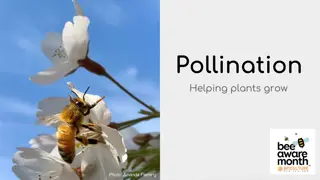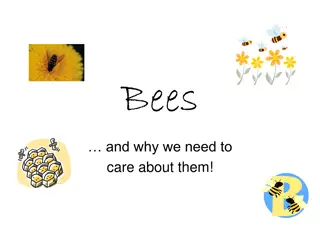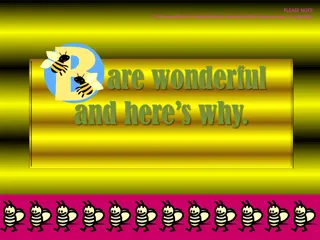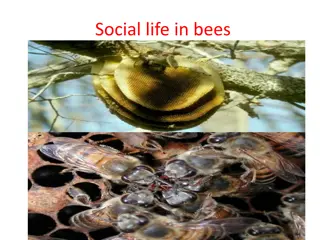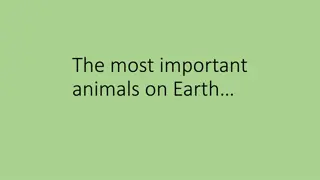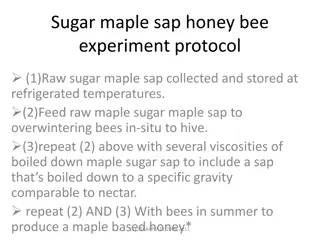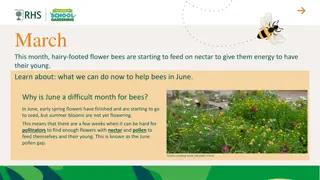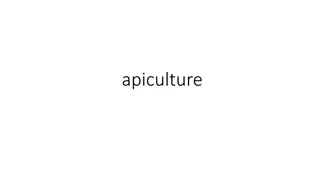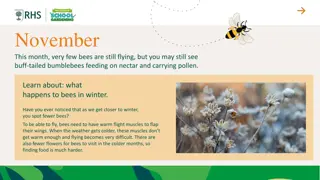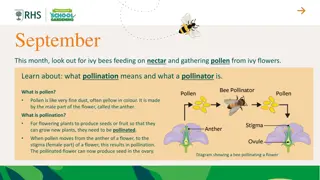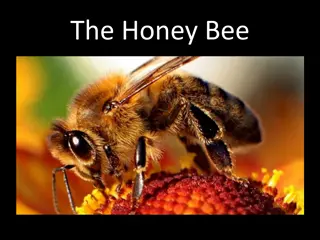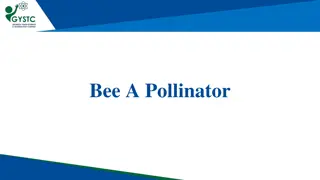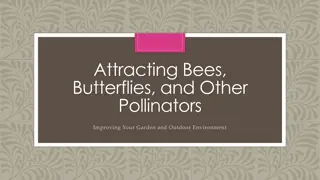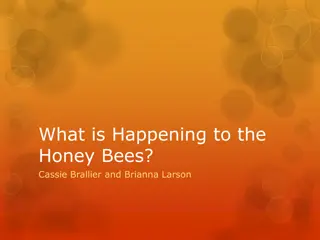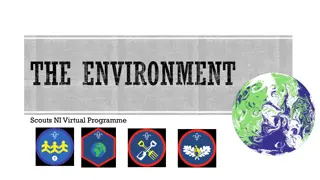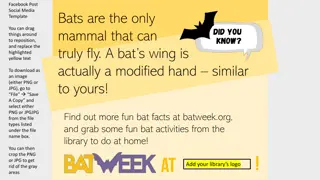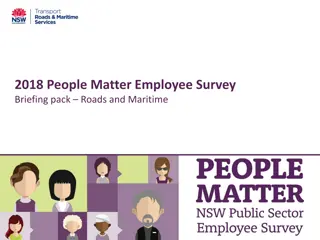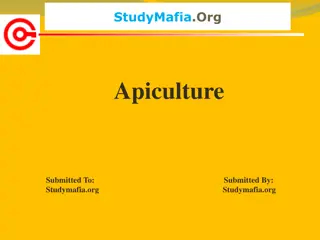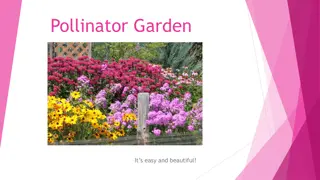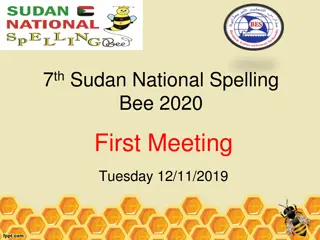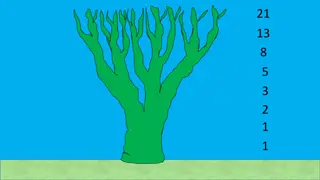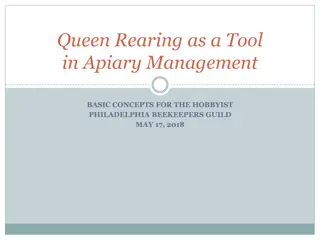The Buzz About Bees: Facts, Importance, and How You Can Help!
Bees play a crucial role in our ecosystem and food supply, with over 20,000 species aiding in pollination. Sadly, bee populations are declining due to various factors like climate change, pesticides, and habitat loss. Understanding the significance of bees, their pollination process, and the risks they face is vital to their survival and our food security.
Download Presentation

Please find below an Image/Link to download the presentation.
The content on the website is provided AS IS for your information and personal use only. It may not be sold, licensed, or shared on other websites without obtaining consent from the author. Download presentation by click this link. If you encounter any issues during the download, it is possible that the publisher has removed the file from their server.
E N D
Presentation Transcript
THE BUZZ ABOUT BEES F A C T S , I M P O R TA N C E , A N D H O W Y O U C A N H E L P !
THE BUZZ ABOUT BEES TEEA EDUCATIONAL PROGRAM - 2021 Learning Objectives Explain the importance of bees and the risk of extinction Identify the process and importance for insect pollination and food security Identify various types of bees Identify and describe the plan and insect adaptations that help insect pollination
BEE TRIVIA ICE-BREAKER First let s see how much we know about bees with this Bee Trivia Activity
Bees are essential for our ecosystem and our food supply There are over 20,000 species and most are solitary The ones we are most familiar with are those that live in hives honeybees, bumblebees, and Africanized honeybees BEE FACTS Bee populations are at risk due to environmental and man-made issues like climate control and pesticides and insecticides
Bees pollinate almost 75% of the plants that produce 90% of the world s food One-third of the world s food production depends on bees! BEES AND OUR FOOD SUPPLY Both humans and animals depend on bees for survival The global crop production pollinated by bees is valued at $577 billion Pollinators contribute $24 billion to U.S. agriculture making up 1/3 of the food we eat
BEES AND POLLEN Pollen is used for plant production Pollen is carried by bees and other pollinators from the male parts of a plant to the female parts inside the flower. Bees have pollen baskets on their back legs which traps the pollen When they move from flower to flower they promote plant production
WHY IS THE BEE POPULATION DECLINING? Factors like pests, diseases, viruses and molds are affecting the bee population In 2006, the colony collapse disorder was identified as a cause of the massive decline in bees throughout the world. This collapse occurs when the worker bees die off leaving only a queen and a food supply. Scientists believe that climate change, overuse of pesticides or insecticides, and industrialization and urbanization are changing natural habitats for bees
Honeybees Bumble bees COMMON TYPES OF BEES Africanized Honeybees Carpenter Bees
CHARACTERISTICS OF BEES Honeybees most common and live in large colonies. Size of a paperclip. Produce honey and beeswax. All summer they collect nectar and pollen. Bumble bees large bees we see buzzing around gardens. They have larger hairy/furry and rounded bodies and lack the thin characteristic stripes of honeybees. They build their nests underground in abandoned bird or mouse burrows. Africanized Honeybees introduced from Africa to Brazil in 1956. They quickly bred with local bees and became Africanized Honeybees. They are aggressive and protect their hive whether provoked or not. They can follow intruders for of a mile. Carpenter Bees make a life burrowing into wood. They are solitary. They drill into wooden structures.
WHAT CAN WE DO TO HELP BEES? Plant a bee-friendly garden by using native and local plants because they are adapted to local conditions and do not require a great deal of care. Plant Avoid spraying pesticides and insecticides in the garden, and especially on flowers. Avoid Check with your County Extension Office for eco-saving solutions to pests in your garden. Check Provide water to bees and other pollinators by hanging a dripping bottle or placing a small container with water out in the open in your garden. Change the water 2-3 times per week. Provide Install a bird bath and add rocks or stones that stick out of the water for bees to crawl and drink water. Install
SUMMARY Bees are important insects that help spread pollen and fertilize plants. We need bees and other pollinators to maintain a quality food supply. Many species of bees are undergoing colony collapse disorder due to many factors. To help improve the bee population, make your backyard more bee-friendly by planting native plants, providing water sources, and helping to preserve the nation s food supply.


